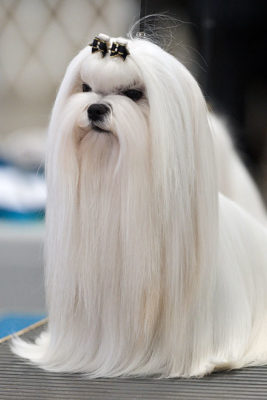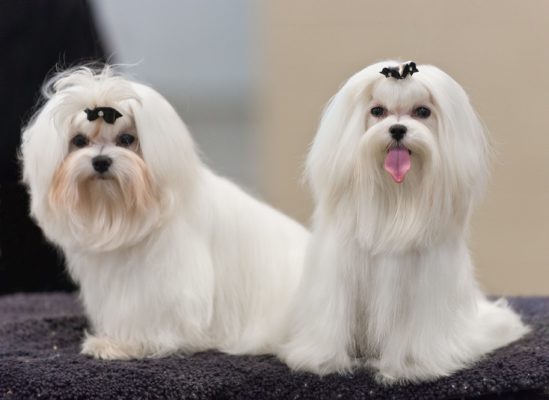Maltese
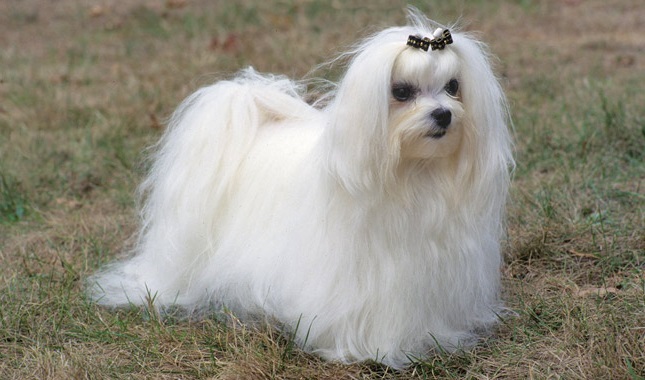
The Maltese is a small and energetic breed of dog that is not just a companion but also a therapy dog. It does an excellent job as part of canister therapy; its presence helps people reduce stress and not feel lonely.
Table of Contents
Breed Information
| Another Name | – |
| Origin | Central Mediterranean Region |
| Height | Males 21-25 cm Females 20-23 cm |
| Weight | 3-4 kg |
| Fur | Long |
| Color | White |
| Lifespan | 12-14 years |
| FCI Classification | Companion and Toy Dogs |
| Group | Small breed or decorative dogs, dogs for apartments, dogs for children |
| Price | From $800 |
Breed Photos
Origin History
The Maltese dog is an ornamental breed whose history goes back about two thousand years. Artists and writers immortalized this little dog in the early cultures of Greece, Rome, and Egypt. Images of Maltese on Egyptian artifacts show that this breed was highly prized in ancient Egyptian culture.
Although history has preserved many details about the Maltese, its exact origins are little known. Because of the breed’s name, it is commonly believed that it was bred on the island of Malta in the Mediterranean Sea and is a descendant of the spitz or spaniel. Another version says that the Maltese were bred in Italy, and another suggests that the breed originated in Asia.
By the fifteenth century, the Maltese were a favorite breed of French aristocrats, and by the end of the sixteenth century, the Maltese had become a favorite pet of royal ladies in the British Isles. In the eighteenth century, when cynologists attempted to breed the smaller Maltese, the breed was all but wiped out. To preserve it, attempts were made to crossbreed the Maltese with the poodle, miniature spaniel, and miniature East Asian dog. It eventually led to the formation of several breeds. The modern Maltese was bred much later by English cynologists.
Appearance
The Maltese characteristics are enshrined in the standards of the three cynological associations – the International Cynological Federation, the British and American Cynological Clubs. For example, American Maltese differ from their European counterparts – they weigh less, and their muzzle is slightly narrower than the International Cynology Federation’s standards.
In general, the Maltese are characterized by a medium-sized, egg-shaped skull. The back of the head is flat, with a bit of a noticeable occipital tubercle. The nose of this Bolon is straight, covered with long hair that reaches to the lower jaw. The black nasal lobe is large, with well-opened nostrils. The eyes of the Maltese are dark in color, large, rounded, and slightly convex. The gaze is always lively and curious. The Maltese are the owner of floppy ears in the shape of a triangle.
The Maltese are known for their incredible coat – light, straight, flowing like a mantle, the pet’s coat gives it a special appeal. The perfect color of Maltese is white. Also, the acceptable color is white with a touch of ivory.
Character
The Maltese is a small and energetic breed of dog that is not just a companion but also a therapy dog. It does an excellent job as part of canister therapy; its presence helps people reduce stress and not feel lonely.
Although Maltese look graceful and aristocratic, they have a lot of energy. Because Maltese has a long history as companion dogs, they require a lot of human attention and suffer from separation. If left alone for a few hours each day, they become very naughty. Maltese can be intolerant of small children or other dogs. They express their intolerance with loud barking and growling and may sometimes try to bite.
Care
Grooming a Maltese can’t be called complicated. It is important to gently brush the pet’s hair daily, even if it has a short haircut. It helps to keep the coat silky and healthy. The color of a Maltese’s coat contributes to the fact that these dogs get dirty quickly, so they need to be bathed weekly.
The ears of the Maltese breed should be checked at least once a week. If they seem sensitive or have an unpleasant odor, the pet should be taken to the veterinarian. Maltese also have a lot of hair growing in their ears, which should be removed regularly.
Maltese are prone to profuse tears, which results in dark spots on the coat around the eyes. Therefore, another aspect of the Maltese’s care is the need for daily eye rinsing. At least twice a week, the Maltese’s teeth should be brushed to remove plaque and bacteria and prevent gum disease. Claw trimming can be done up to twice a month.
Members of this breed like to take regular walks or play outside. Because they are active indoors and don’t require much exercise, it doesn’t take much effort to keep them in good shape.
Training
Like any dog, the Maltese needs early socialization to help Maltese grow into an intelligent and friendly pet. Maltese dogs are well-trained and trainable. They love to please their owner, so they will obey any commands and tricks he teaches them.
Sometimes there are stubborn ones among this breed, but during training, this can be solved by offering a treat to encourage the dog and praising it for every command it executes. It is not recommended that you raise your voice at the Maltese and show him aggression during training. It will only hurt and make the dog unmanageable.
Common Diseases
Maltese dogs are generally in good health, but they can be prone to various illnesses like other breeds. One such condition is patellar dislocation. When this happens, the knee joint dislocates, which causes the pet pain when moving, and he begins to limp. Although it is unhealthy, many dogs with this condition lead relatively normal lives.
Another condition to which the Maltese are more prone is white dog shaker syndrome. Signs of this condition include tremors throughout the body, poor coordination, and rapid eye movements. The disease manifestation usually begins between the ages of six months and three years when she is stressed or overexcited. Shaker syndrome does not affect the dog’s personality, but treatment options can be discussed with the veterinarian to reduce the pet’s discomfort.
Pathologies such as urolithiasis, progressive retinal atrophy, and low blood sugar can result in hypoglycemia, and tracheal collapse is relatively less common among Maltese.
Nutrition
The Maltese can be fed either dry food or natural food. In both cases, it is important to watch the portion size and feed your pet twice a day on a schedule without leaving food in the bowl all day. Deviation from this rule can lead to overfeeding the pet, as a result of which this Bolonette will gain weight and become a clumsy, woolly lump. Also, chubby Maltese are prone to shortness of breath and digestive problems.
In a natural diet, the Maltese diet should consist of meat, buckwheat or rice porridge, vegetables, and fruits. Once a week, meat can be replaced with boneless saltwater fish. The Maltese can be offered dairy products, quail egg yolk, walnuts with honey, and other treats from time to time.
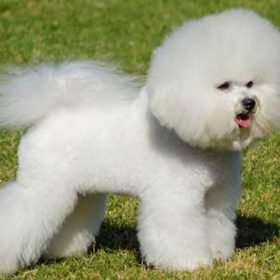 Bichon Frise
Bichon Frise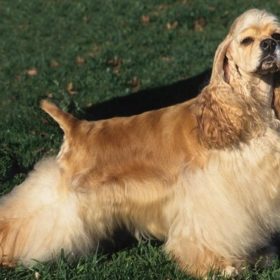 American Cocker Spaniel
American Cocker Spaniel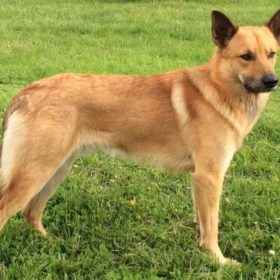 Chinook
Chinook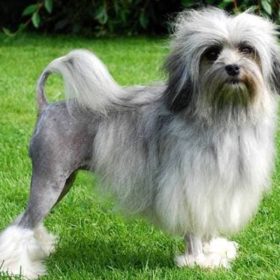 Löwchen
Löwchen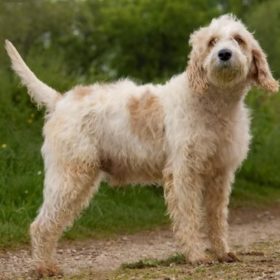 Briquet Griffon Vendéen
Briquet Griffon Vendéen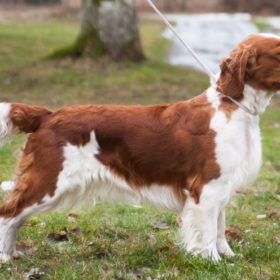 Welsh Springer Spaniel
Welsh Springer Spaniel